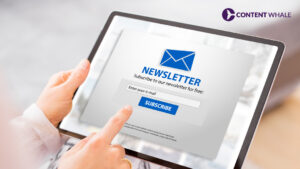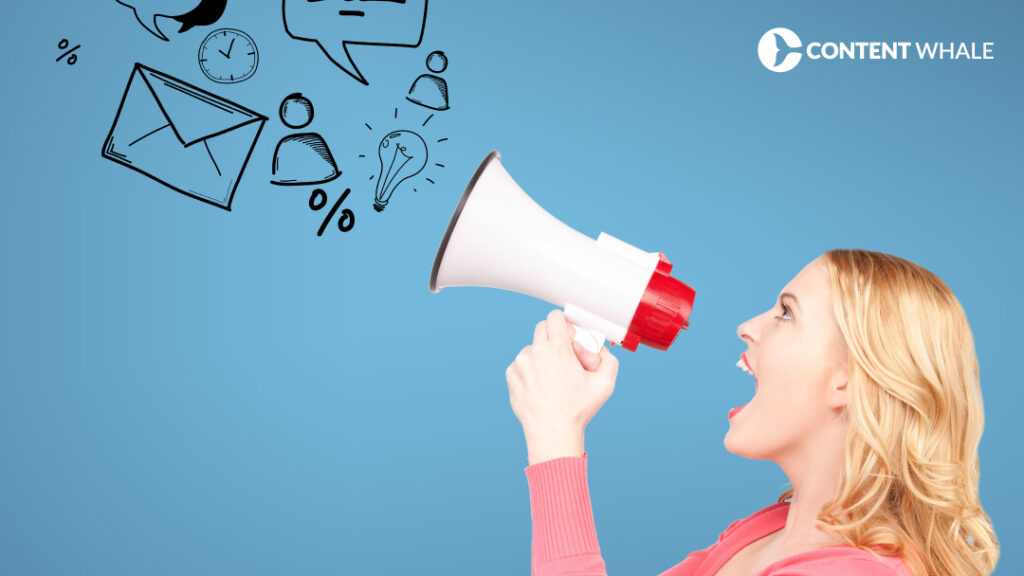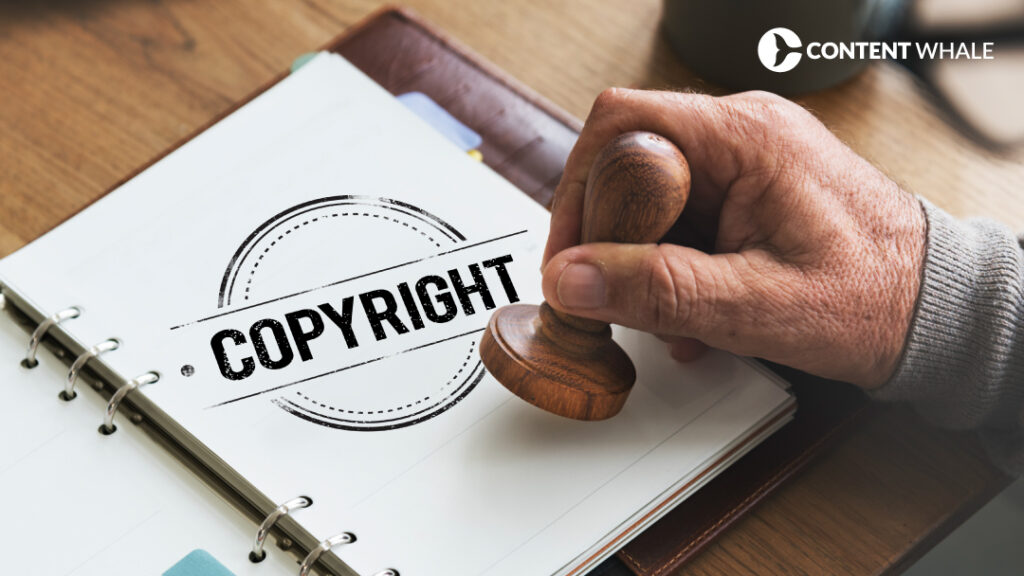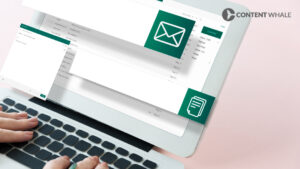Did you know that email marketing generates 40 times the return on investment compared to Facebook or Twitter? In the vast universe of digital marketing, newsletters are a powerful tool, boasting unparalleled capacity to engage audiences and catalyze business growth. This statistic not only illustrates the efficacy of newsletters in reaching target audiences but also underscores their potential as a cornerstone in any marketing strategy.

What is a Newsletter?
A newsletter is a regular distribution of information to a specific audience via email or traditional mail. Its primary purpose is to keep readers informed about the topics they care about, incorporating updates, insights, and other relevant content. The format can vary widely, from simple text-based emails to richly designed HTML layouts or even printed documents that are mailed directly to subscribers.
Historically, newsletters began as printed documents that organizations and communities distributed to keep their members informed. Over time, they have evolved significantly with the advent of digital technology. Today, email newsletters dominate due to their cost-effectiveness, ease of distribution, and global reach. This evolution has transformed newsletters into a dynamic tool for real-time communication and a vital part of content marketing strategies.

Benefits of Newsletters
Building Brand Awareness & Loyalty
One of the primary advantages of using newsletters is their ability to build and enhance brand awareness and loyalty. Regular updates help keep your brand fresh in the minds of consumers, nurturing ongoing relationships. This repeated exposure is crucial for brand retention and helps transform casual readers into loyal followers. By providing consistently valuable and relevant content, newsletters can create a strong emotional connection with subscribers, making your brand a preferred choice.
Driving Targeted Traffic
Newsletters are a direct channel to your audience’s inbox, allowing you to drive traffic to your website or specific landing pages. By including compelling calls-to-action and links to recently posted articles or product pages, you can guide your subscribers to engage more deeply with your brand. This targeted approach ensures that the traffic driven by newsletters is highly qualified and more likely to convert into leads and sales.
Content Marketing & Thought Leadership
Through thoughtfully crafted content, newsletters position an organization as a thought leader in its industry. This content, whether it’s insightful articles, industry news, tips, or resources, establishes your brand as a knowledgeable and credible source. Subscribers come to rely on your newsletter for valuable information, which can elevate your standing within the industry and differentiate your brand from competitors.
Boosting Sales & Conversions
Newsletters can significantly influence sales and conversions by promoting special offers, discounts, and information on new products or services. They provide a platform to directly communicate these incentives to a captive audience, encouraging immediate action, such as making a purchase or signing up for an event. This direct form of marketing is effective in driving short-term spikes in sales and improving overall profitability.
Community Building & Engagement
Finally, newsletters serve as a key element in building a community around your brand. They offer a platform for interaction, feedback, and personal engagement with subscribers. By encouraging dialogue through surveys, comments, or social media shares, newsletters help foster a sense of community and belonging. This engagement not only enhances customer satisfaction and loyalty but also turns subscribers into brand advocates.

Types of Newsletters
Company Updates
Company update newsletters are essential for keeping subscribers informed about the latest developments within a business, including new product launches, upcoming events, and other significant announcements. This type of newsletter is a direct line of communication between a company and its stakeholders, including customers, partners, and employees. By regularly sharing updates, businesses can maintain a transparent relationship with their audience, fostering trust and keeping their brand top-of-mind. For instance, a newsletter might announce the release of a new product, detail enhancements to existing services, or invite subscribers to a company-hosted webinar.
Curated Content Newsletters
Curated content newsletters are designed to compile and highlight pertinent industry news, articles, resources, and more. They provide a valuable service by sifting through vast amounts of content to present a refined selection that is most relevant to the subscribers’ interests and needs. This not only saves readers time but also positions the sender as a valuable resource hub within their field. Curated newsletters are particularly useful for those looking to stay informed about industry trends without the need to visit multiple sources.
Educational Newsletters
Educational newsletters focus on delivering informational content that enriches the subscriber’s knowledge and skills related to a specific niche or area of expertise. These newsletters often include how-to guides, tips, tutorials, and in-depth insights that are not readily available elsewhere. Educational content can help subscribers solve specific problems, learn new skills, or understand complex topics. This type of newsletter is especially popular among educational institutions, tech companies, and professional services firms aiming to add value to their audience’s professional or personal development.

Promotional Newsletters
Promotional newsletters are squarely focused on marketing. They aim to drive sales and conversions through the promotion of products, services, or special offers. These newsletters might spotlight a limited-time discount, a special bundle offer, or the launch of a new product line. The key to success with promotional newsletters is to balance the sales-driven content with valuable information to avoid overwhelming the subscriber with advertisements, thus keeping the engagement levels high.
Transactional Newsletters
Transactional newsletters serve a critical function by communicating specific actions related to a customer’s account or order status. This type includes order confirmations, shipping notifications, billing information, and other transaction-related communications. Because these emails are triggered by the user’s actions, they typically boast high open rates and are crucial for ensuring a smooth customer experience. By effectively managing transactional emails, businesses can significantly enhance customer satisfaction and build lasting relationships.
| Type of Newsletter | Primary Focus | Main Features |
|---|---|---|
| Company Updates | Business developments | Shares news about product launches, events, and significant announcements; fosters transparency and brand presence. |
| Curated Content | Industry news and resources | Aggregates relevant news, articles, and resources; serves as a resource hub for industry-specific information. |
| Educational | Knowledge enhancement | Provides insights, tips, tutorials, and how-to guides; enriches subscriber’s skills and understanding of complex topics. |
| Promotional | Marketing and sales | Promotes products, services, and special offers; aims to drive sales and conversions while balancing informational content. |
| Transactional | Customer transaction updates | Sends confirmations, shipping updates, and account info triggered by user actions; essential for customer satisfaction. |

Creating a Winning Newsletter Strategy
Creating an effective newsletter strategy is crucial for harnessing the full potential of email marketing in reaching and engaging your audience while driving meaningful actions. Whether your goals are to increase website traffic, enhance brand awareness, or boost sales, the strategic crafting of your newsletter can be a powerful catalyst for business growth. This comprehensive guide outlines essential steps for developing a newsletter strategy that not only reaches but resonates with your audience.
Defining Your Goals
The first step in creating a newsletter strategy is to clearly define what you hope to achieve. These goals will guide every decision you make, from content creation to subscriber engagement tactics. Common objectives for newsletters include increasing website traffic, enhancing brand visibility, and driving sales. It is crucial to set measurable and attainable goals to continually assess the effectiveness of your newsletter strategy and make necessary adjustments.
Building Your Subscriber List
A robust subscriber list is the backbone of any successful newsletter strategy. To grow this list organically, start by implementing website opt-in forms that are clearly visible and offer an easy signup process. Utilizing lead magnets, such as free ebooks, exclusive content, or discounts, can significantly enhance subscription rates by providing value in exchange for email addresses. Additionally, promoting your newsletter on social media and other digital platforms can expand your reach and attract a broader audience.
Segmentation & Targeting
Segmentation and targeting are key to delivering content that is relevant to your audience. By dividing your subscribers into groups based on demographics, interests, or behaviors, you can tailor your messages to meet the specific needs of each segment. This targeted approach not only improves engagement rates but also enhances the overall effectiveness of your newsletters by ensuring that the right content reaches the right people.

Content is King
Creating compelling content is essential for the success of your newsletter. Below are some actionable tips to help you craft content for newsletters that captivates and engages your audience:
- Identifying Reader Pain Points: It is crucial to understand your audience’s challenges. This knowledge allows you to create content that addresses these issues, providing real value to your readers.
- Headlines that Hook: The importance of an attention-grabbing headline cannot be overstated. Your headline is the first impression subscribers get of your newsletter, so make it compelling enough to entice them to read further.
- Variety is Key: Incorporating a diverse range of content formats, such as text, images, infographics, and videos, can make your newsletter more engaging. This variety caters to different preferences and helps maintain subscriber interest over time.
- Call to Action (CTA): Every newsletter should include a clear and concise CTA. Whether it’s encouraging readers to visit your website, register for a webinar, or learn more about a product, your CTA should inspire action and offer clear next steps.
A well-thought-out newsletter strategy is a potent tool in your marketing arsenal. By setting clear goals, growing and segmenting your subscriber list, and crafting engaging content, you can develop a newsletter that not only informs but also deeply engages your audience and drives them to action. Remember, the success of your newsletter is contingent upon how well it resonates with your readers’ needs and interests. By continuously refining your approach and staying attuned to your audience’s preferences, you can build a newsletter strategy that consistently delivers results.
Designing a Beautiful & User-Friendly Newsletter
Creating a visually appealing and user-friendly newsletter is essential to keep your audience engaged and ensure they have a positive interaction with your content. From the visual elements to the layout, every detail contributes to how effectively your newsletter communicates your message and maintains reader interest.
Visual Appeal
The importance of visual appeal in newsletter design cannot be overstated. A visually attractive newsletter captures attention and encourages readers to engage with the content. High-quality images that resonate with your message, consistent branding across every issue, and a clean, organized layout are foundational elements. These aspects work together to create a professional and appealing look that not only draws in readers but also keeps them scrolling.

Mobile Optimization
With the increasing use of smartphones to read emails, mobile optimization is no longer optional; it’s imperative. Ensuring your newsletter renders flawlessly on mobile devices means considering factors like responsive design, which adjusts content layout based on screen size, and loading times for images. A mobile-optimized newsletter provides a seamless viewing experience across all devices, ensuring that no user is frustrated by misaligned content or excessive scrolling.
Readability Matters
Readability is crucial for keeping your audience engaged. The use of clear, easy-to-read fonts, appropriate font sizes, and ample white space contributes significantly to a comfortable reading experience. These elements help prevent reader fatigue and make the content more accessible, encouraging subscribers to read through to the end. Moreover, well-structured text with bullet points, short paragraphs, and highlighted key messages can further enhance readability and retention of information.
The Power of Branding
Consistent use of branding elements such as logos, color schemes, and fonts reinforces brand recognition and trust. Each newsletter is an opportunity to strengthen your brand identity in the minds of your readers. Consistency ensures that your newsletters are immediately recognizable, which can increase reader loyalty and provide a cohesive brand experience across all channels.
A/B Testing
Finally, A/B testing is a valuable tool for optimizing your newsletter design. By testing different design elements, such as the layout, color schemes, or call-to-action placements, you can discover what resonates best with your audience. This data-driven approach allows you to refine your design based on actual user preferences and behaviors, leading to better engagement and effectiveness of your newsletters.
Designing a beautiful and user-friendly newsletter involves more than just aesthetic appeal—it requires a thoughtful approach to usability and reader experience. By focusing on visual design, mobile optimization, readability, consistent branding, and employing A/B testing, you can create a newsletter that not only looks great but also performs well, engaging your audience effectively and reinforcing your brand identity.

Building a Successful Newsletter Campaign
A successful newsletter campaign is pivotal for maintaining engagement and growing your subscriber base. Crafting such a campaign involves several crucial components: maintaining a consistent schedule, optimizing subject lines, ensuring high deliverability, and analyzing performance metrics.
Frequency & Consistency
The frequency of your newsletters plays a crucial role in keeping your brand top-of-mind for subscribers without overwhelming them. Establishing a consistent sending schedule—be it weekly, bi-weekly, or monthly—is key. This consistency helps build a habit in your subscribers’ reading routine, anticipating your content on a regular basis, which in turn can enhance loyalty and engagement rates.
Subject Lines That Matter
The subject line is often the first impression your newsletter makes on a subscriber. Crafting compelling subject lines is essential to spark interest and encourage openings. Effective subject lines are typically concise, intriguing, and aligned with the content. Personalization, such as including the subscriber’s name or references to their interests, can further increase the likelihood of your emails being opened.
Email Deliverability
Improving email deliverability is crucial to ensure your newsletters actually reach subscribers’ inboxes and don’t end up in spam folders. This can be achieved through permission-based lists where subscribers actively opt-in to receive your communications. Regularly cleaning your list by removing inactive subscribers and correcting misspelled email addresses also helps maintain a healthy sender reputation and improves deliverability.
Analytics & Measurement
Monitoring key performance metrics such as open rates, click-through rates, and unsubscribe rates is vital to assess the effectiveness of your newsletter campaign. These analytics help identify what resonates with your audience and where there is room for improvement. Adjusting your strategy based on these insights can lead to better engagement and overall campaign success.
A well-structured newsletter campaign is a dynamic tool in digital marketing, essential for building relationships with your audience. By paying close attention to frequency, crafting engaging subject lines, ensuring high deliverability, and analyzing campaign performance, you can develop a newsletter that not only reaches but also resonates with your audience, fostering sustained engagement and growth.

The Future of Newsletters
Emerging trends in the newsletter field are set to enhance how businesses engage with their audiences. Personalization is becoming more sophisticated, with content tailored to individual preferences and behaviors, making each newsletter feel uniquely relevant to the reader. Interactive content is also on the rise, including polls, surveys, and interactive infographics that increase reader engagement and time spent on the newsletter.
Additionally, the integration of artificial intelligence in newsletters is streamlining processes like content curation, subscriber segmentation, and behavior prediction, ultimately improving the effectiveness and efficiency of newsletter campaigns. These innovations are shaping a more dynamic and personalized future for email marketing.
Newsletters continue to be a potent tool for businesses to connect with their audience, build brand loyalty, and achieve marketing objectives.
By understanding the diverse types of newsletters and crafting engaging content tailored to subscriber interests, organizations can establish a robust newsletter strategy. Implementing strategic best practices such as effective segmentation, compelling content creation, and thorough performance analysis ensures that newsletters not only reach but also resonate deeply with subscribers.
This approach guarantees that each campaign not only disseminates information but also builds a durable connection with the audience, driving both engagement and business results.
Crafting exceptional newsletters that resonate and drive results can be a challenge. That’s where Content Whale comes in. Our team of expert newsletter writers can help you develop a winning strategy, craft compelling content, and leverage the latest trends to create winning newsletters that get noticed and drive action. Let Content Whale help you harness the power of email marketing and forge strong connections with your audience.

FAQs
What is a Newsletter?
A newsletter is a periodic publication that is sent to a group of subscribers via email or traditional mail, focusing on providing valuable information tailored to their interests.
What is an Email Newsletter?
An email newsletter is a digital version of traditional newsletters, distributed through email channels, allowing for rapid dissemination of information and interactive content.
What is Newsletter in Website?
Many websites feature sign-up options for newsletters which enable visitors to receive updates directly in their inbox, ensuring they stay connected with the latest site content and news.
What Do You Mean by Newsletter?
By ‘newsletter’, we refer to a regularly scheduled dispatch aimed at engaging a reader base with content ranging from educational material to promotional offers, all tailored to foster loyalty and brand awareness.
What to Write About in a Newsletter?
Content in newsletters can vary widely but often includes industry insights, company news, practical tips, and personal stories to enhance the reader’s knowledge and engagement with the brand.
What is a Good Newsletter?
A good newsletter is visually appealing, reader-friendly, and provides consistently valuable content that meets the needs and interests of its audience while reflecting the brand’s voice and goals.
What is the Purpose of a Newsletter?
The primary purpose of a newsletter is to keep subscribers informed, engaged, and connected with ongoing developments, whether for educational, entertainment, or marketing objectives.
What Does a Newsletter Look Like?
Newsletters can range from simple text-based emails to complex HTML layouts with multimedia elements such as images, videos, and links, all designed to enhance reader engagement and interaction.
What to Put in a Newsletter?
Effective newsletters often include a mix of content types, such as feature articles, customer stories, new product information, and occasional promotional offers to maintain high engagement levels.
What is the difference between a newsletter and a marketing email?
- Newsletters typically focus on delivering valuable content, news, or industry insights, while marketing emails have a more promotional slant, directly pushing products or services. Newsletters aim to build relationships and nurture leads, whereas marketing emails aim for immediate conversion.
How often should I send newsletters?
- The ideal sending frequency varies by audience and content strategy. Weekly newsletters might suit fast-paced industries, whereas monthly might be better for others. Experiment to find your audience’s sweet spot and maintain a regular schedule.
How can I avoid my newsletters going to spam?
- Use a permission-based email list, keep it clean of inactive subscribers, and ensure your emails have a clear unsubscribe option. Avoid misleading subject lines and excessive use of ALL CAPS.
What are some legal considerations for sending newsletters?
- Adhere to anti-spam regulations like CAN-SPAM in the US or GDPR in the EU. Always include an unsubscribe option and a physical mailing address in your newsletters.
How can I measure the success of my newsletter campaign?
- Track open rates, click-through rates, unsubscribe rates, and conversion rates. Also, monitor engagement metrics like forwards and social shares, and use analytics tools to refine your strategy.
I am still new to email marketing. Are there any resources to help me get started?
- Explore free trials and educational resources from email marketing platforms. Online courses, ebooks, and webinars on email marketing best practices can also be beneficial, as well as industry publications and blogs.
| Section | Key Points | Highlights |
|---|---|---|
| Introduction | Newsletters are potent tools for digital marketing, offering a return on investment significantly higher than other social platforms. | Discover the impressive impact of newsletters. |
| What is a Newsletter? | Newsletters are regular distributions of information, either digital or printed, aimed at keeping an audience engaged and informed about relevant topics. | Exploring the format and purpose of email and website newsletters. |
| Benefits of Newsletters | Enhances brand awareness, drives targeted traffic, establishes thought leadership, boosts sales, and builds community. | Learn what makes a newsletter effective and purposeful. |
| Types of Newsletters | Types include company updates, curated content, educational, promotional, and transactional newsletters. | A look at various newsletter formats and their applications. |
| Creating a Winning Strategy | Discusses the importance of setting clear goals, building subscriber lists, segmenting audiences, and crafting engaging content. | Strategies on what to write and how to engage in a newsletter. |
| Designing a Newsletter | Focuses on visual appeal, mobile optimization, readability, consistent branding, and A/B testing. | Crafting visually appealing and reader-friendly newsletters. |
| Building a Successful Campaign | Emphasizes frequency and consistency, compelling subject lines, improving email deliverability, and measuring success through analytics. | Tips on crafting compelling content and ensuring successful delivery. |
| The Future of Newsletters | Highlights emerging trends like personalization, interactive content, and AI-powered automation in newsletter strategies. | The evolving landscape of newsletter technology and trends. |
| Conclusion | Reinforces that newsletters are vital for connecting with audiences, building loyalty, and achieving marketing goals through well-crafted content and strategic execution. | Summing up the enduring value and impact of newsletters. |





